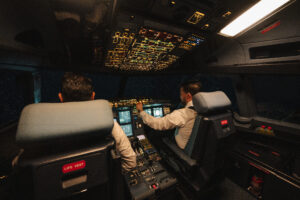If you’re aspiring to become a commercial pilot, the Philippines offers an excellent training ground for your aviation career. Here’s a detailed guide to the different pilot licenses and certifications you need to take in order to become a commercial airline pilot in the Philippines.
1. Student Pilot Authorization (SPA)
The first step in your aviation journey is obtaining a Student Pilot Authorization (SPA). This essential certification allows you to begin your flight training and accumulate flight hours toward becoming eligible for a Private Pilot License (PPL).
Requirements for SPA:
- Enrollment in a flight school authorized by the Civil Aviation Authority of the Philippines (CAAP).
- Must be at least 17 years old.
2. Private Pilot License (PPL)
The Private Pilot License (PPL) is your gateway to flying for leisure. With this license, you’re authorized to fly privately but are not allowed to accept payment for your flying services. To obtain a PPL, you’ll need to complete the required ground school, pass the CAAP Knowledge Exam, and log a minimum of 40 flight hours. Afterward, you’ll undergo a practical flight test with a CAAP examiner.
PPL Requirements:
- Class 2 Medical Certificate
- Flight logbook documenting 40 hours of flight time (20 hours dual and 10 hours solo).
- CAAP-ATO Knowledge Exam (Passed)
- NTC Radio Telephony License
- NBI Clearance
- Successful completion of CAAP Practical Flight Test and Oral Examination
3. Commercial Pilot License (CPL)
The Commercial Pilot License (CPL) allows you to fly professionally and get paid for your services. To qualify, you must complete a CPL Ground School, accumulate at least 150 flight hours, pass the CPL Knowledge Test, and undergo a CAAP Practical Test. The CPL is the standard license for pilots aiming to work with commercial airlines.
CPL Requirements:
- Class 1 Medical Certificate
- Flight logbook documenting 150 hours of flight time, including:
- 70 hours as Pilot in Command (PIC)
- 50 hours of Local Flight Time
- 20 hours of Cross-Country Flight Time
- At least one cross-country flight covering a minimum of 300 nautical miles (540 km) with landings at two different aerodromes.
- 10 hours of instrument time, of which no more than 5 hours can be instrument ground time.
- CAAP-ATO Knowledge Exam (Passed)
- English Language Proficiency Test Level 4
- NTC Radio Telephony License
- Successful completion of the CAAP Practical Flight Test and Oral Examination
4. Airline Transport Pilot License (ATPL)
The Airline Transport Pilot License (ATPL) is the highest level of pilot certification in the Philippines. To earn this license, you must have logged a total of 1,500 flight hours. The ATPL qualifies you to operate as a pilot-in-command of a multi-crew aircraft for a commercial airline.
ATPL Requirements:
- Class 1 Medical Certificate
- Flight logbook documenting 1,500 flight hours
- CAAP-ATO Knowledge Exam (Passed)
- English Language Proficiency Test Level 4
- NTC Radio Telephony License
- Completion of ATPL Ground Training
5. Instrument Rating (IR)
An Instrument Rating (IR) allows pilots to fly under Instrument Flight Rules (IFR), enabling them to operate in low visibility and poor weather conditions. This rating trains pilots in various instrument readings, navigation using instruments, and the skills required for flying solely by reference to instruments.
IR Requirements:
- Class 1 Medical Certificate
- Private Pilot License (PPL)
- CAAP-ATO Knowledge Exam (Passed)
6. Multi-Engine Rating (MER)
The Multi-Engine Rating (MER) enables pilots to fly aircraft with more than one engine. This rating is essential for those looking to operate twin-engine aircraft. To earn this rating, you’ll need to complete an equipment qualification course and log a minimum of 12 flight hours before taking the written and practical exams.
MER Requirements:
- Class 1 Medical Certificate
- Private Pilot License (PPL)
- CAAP-ATO Knowledge Exam (Passed)
Why Choose Global Training Aviation (GTA) for Your Next Step?
Global Training Aviation (GTA) is your next and ultimate step in your pilot career. At GTA, we offer specialized training programs, including Type Rating Courses, which can help you transition from a student pilot to a professional airline pilot. Once you complete your Type Rating with us, you’ll be fully prepared to be hired by major airlines, giving you a clear path to employment in the aviation industry.
Our training facility at Airbus A320 Training Center GTA Indonesia, approved by the Civil Aviation Authority of the Philippines (CAAP), is equipped with the latest, state-of-the-art Level D flight simulators and training devices. We offer an environment tailored to European Aviation Safety Agency (EASA) standards, providing top-tier training that aligns with global aviation standards.
Moreover, GTA provides a much more affordable alternative compared to the high costs typically associated with Type Rating courses in the Philippines. Our licensed European instructors ensure that you receive the best possible training in a professional and modern setting. This is an excellent opportunity to fast-track your career while saving on costly training expenses.
Take the next step in your aviation career with GTA, where the best training meets affordability!







